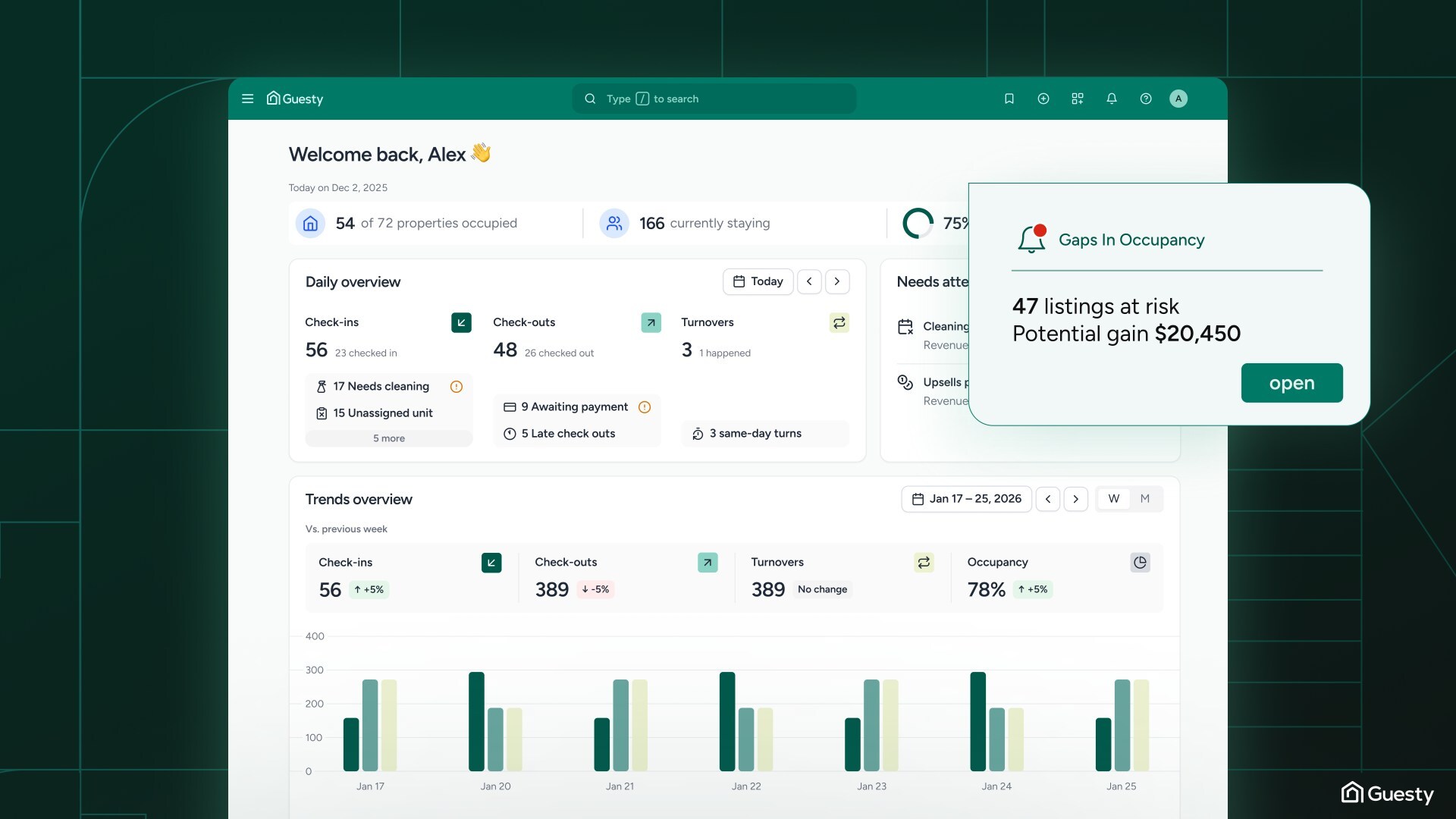Fall travel is off to a slower start across much of the U.S., as concerns over the federal government shutdown weigh on traveler confidence and staffing shortages at airports discourage air travel.
According to new data from PriceLabs’ Short-Term Rental Index, national occupancy fell 6.1% year-over-year in September, extending into October with a 13.1% decline compared to the same time last year. Only North Carolina (+2.3%) is pacing ahead, while states reliant on air travel and event-driven tourism like Delaware (-20.2%), Washington, D.C. (-20.2%), and Maryland (-14.2%) saw steep drops.
Drive-to Destinations Hold Strong
Despite the slowdown, regional “drive-to” markets are proving resilient. Asheville, North Carolina, leads fall occupancy gains at +10%, followed by Acadia National Park, Maine (+8%), Aspen, Colorado (+3%), and Shenandoah National Park, Virginia (+1%). These areas are benefitting from strong local demand and travelers’ growing preference for avoiding airports amid TSA shortages.
In absolute terms, Acadia National Park tops the list for October with 71% occupancy, followed by the Smoky Mountains (63%), both destinations supported by year-round appeal and proximity to major metro areas.
Meanwhile, classic foliage getaways like Oregon’s McKenzie River Scenic Byway (-8%), Stowe, Vermont (-7%), and the Berkshires, Massachusetts (-6%) are feeling the pinch, with weaker booking pace than in 2024.
Outlook: Weak Near-Term, Stronger Winter Ahead
November bookings are pacing 9.4% below last year, though last-minute Thanksgiving travel could provide a lift. December, however, is shaping up more favorably, with 10 states already ahead of 2024, led by Tennessee (+10.7%), Hawaii (+10.3%), and Colorado (+9.3%).
“Even with a softer start to fall travel, there are still bright spots,” said Richie Khandelwal, President and Co-Founder of PriceLabs. “Many drive-to destinations are seeing steady demand, suggesting travelers are seeking convenience and comfort closer to home.”

.webp)


